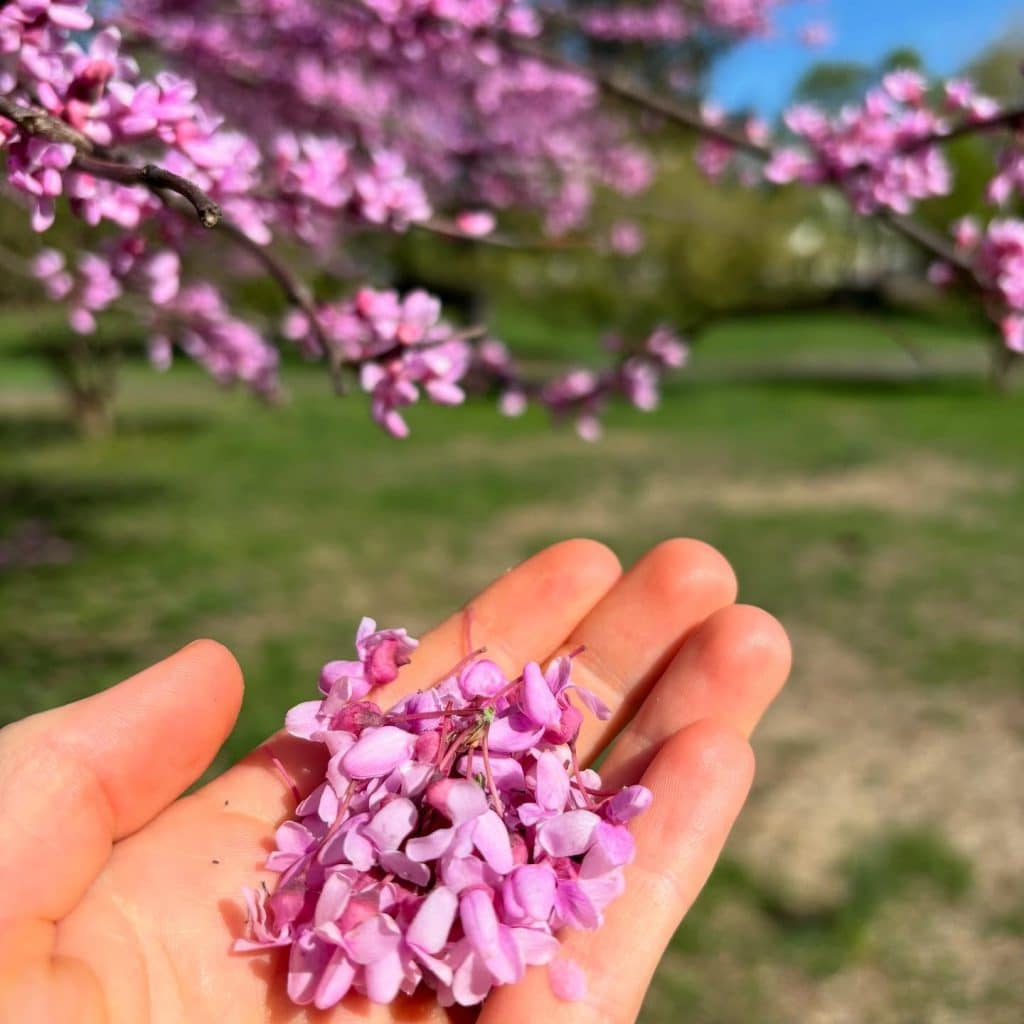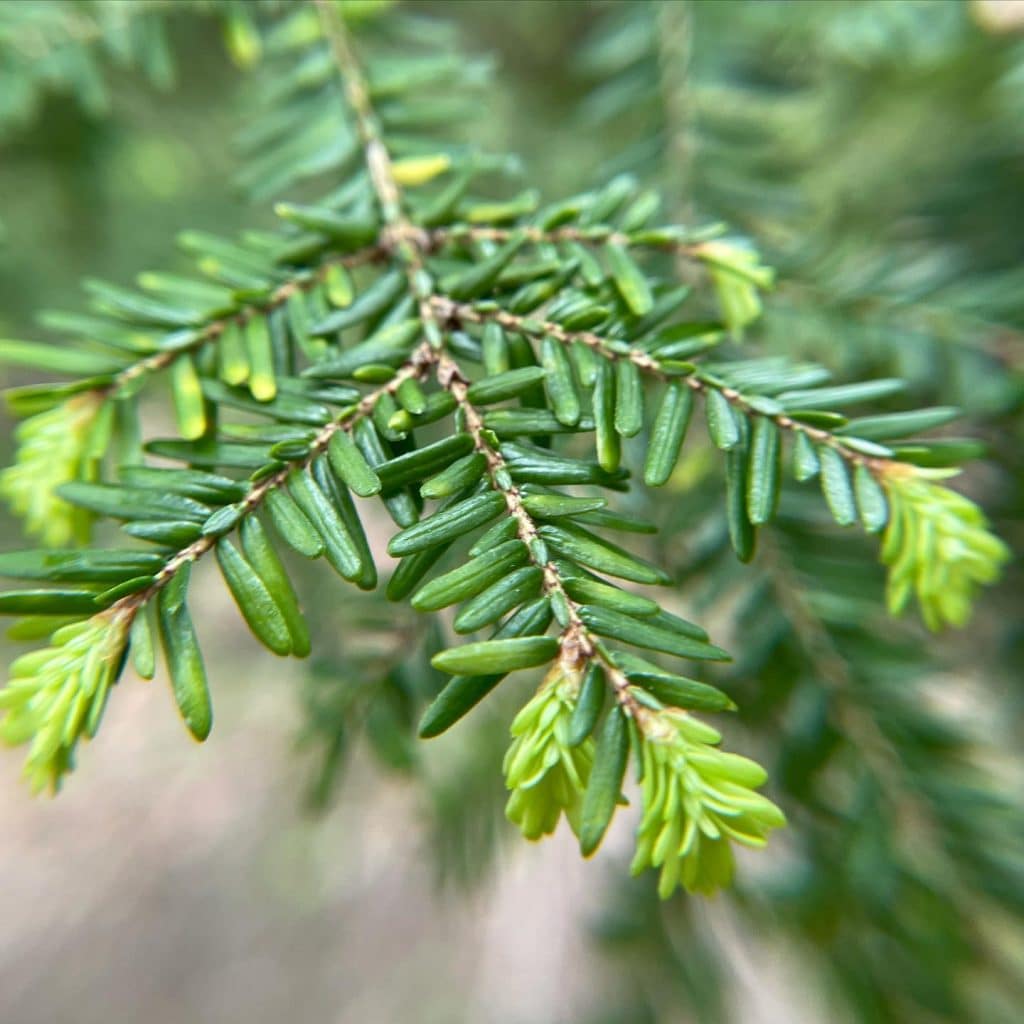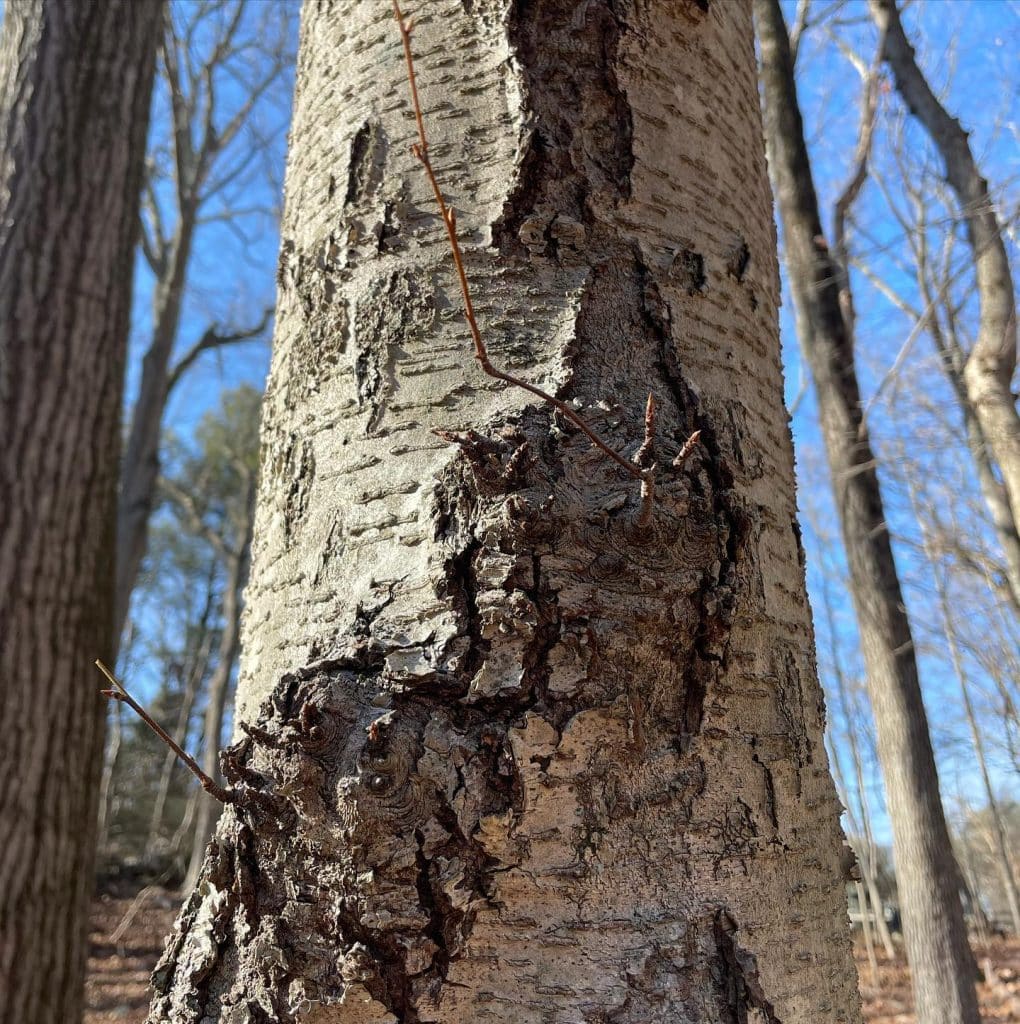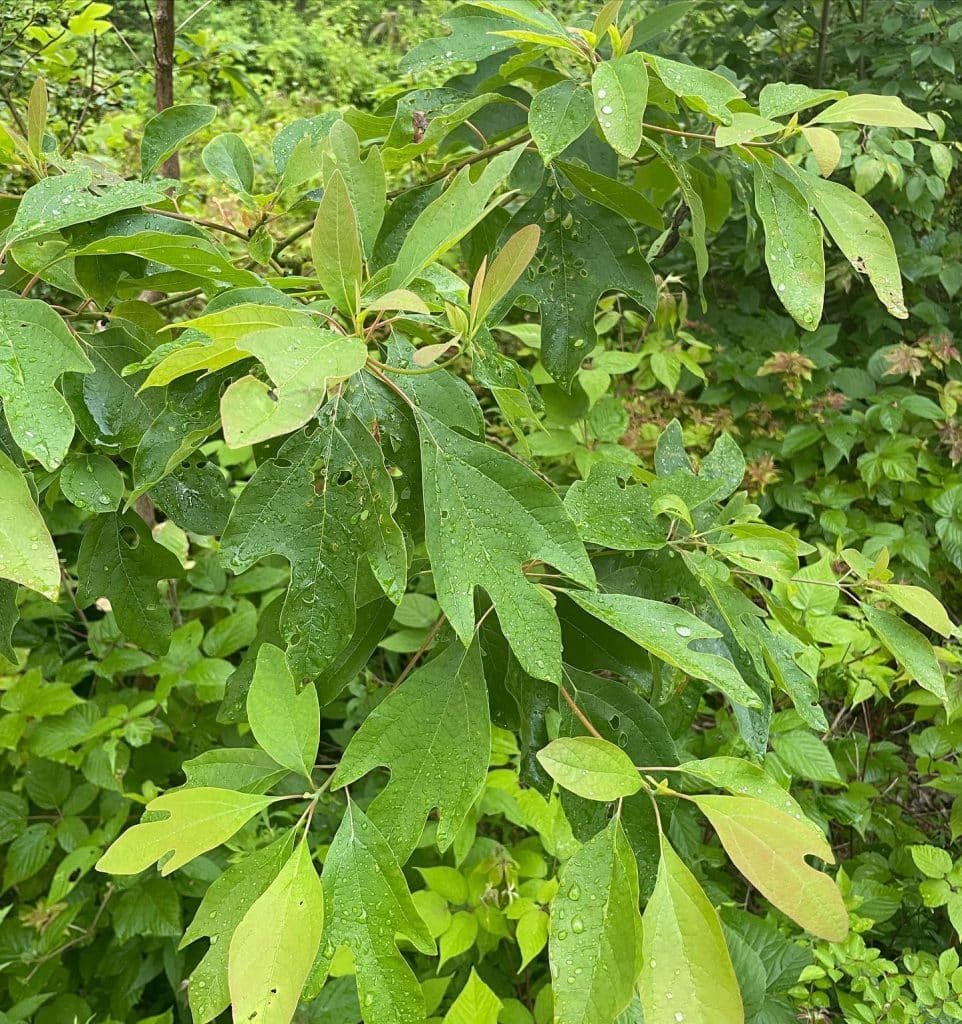Cercis canadensis – Eastern Redbud

Eastern redbud (Cercis canadensis) is a tree native to southwestern CT that produces edible flowers in mid-spring. Eastern redbud can be found in mixed woodlands or cultivated areas. Pink flowers appear in spring before the leaves emerge. Leaves are alternate and heart shaped. Flowers become pods in later spring. Redbud blossoms taste like sweet peas […]
Tsuga canadensis – Eastern Hemlock

Eastern Hemlock Trees (Tsuga canadensis) are native, common forest trees. Eastern Hemlocks can be identified by their 1/2 inch long, flat needles that have white stripes on their underside. The stems also have miniature, often upside down needles that line the top of the branches. The cones are 3/4 inch long. The trees can grow […]
Betula lenta – Black Birch

Black Birch (Betula lenta) is a native tree with edible sap and cambium (inner bark). Young leaves and trigs can also be eaten or used for flavoring. Black birch has shiny bark with horizontal lenticels (raised pores). Broken twigs have a wintergreen scent from the methyl salicylate in the tree. Twigs can be used […]
Sassafras albidum – Sassafras

Sassafras (Sassafras albidum) is a common native tree in CT. Sassafras can be identified by having three distinct leaf patterns (one, two, and three lobed leaves). Sassafras leaves have a citrusy smell when crushed. Young sassafras leaves are edible raw. They have a mucilaginous texture and slightly lemony taste. Sassafras leaves are dried and ground […]
Tilia americana – American Linden

The American Linden (Tilia americana) is a native tree with edible leaves, flowers, sap, and inner bark. The American linden has finely serrated heart-shaped leaves. The flowers and seeds hang downward from elongated leafy bracts. The fragrant flowers bloom for about two weeks in the middle of the summer. American linden leaf buds can be […]
